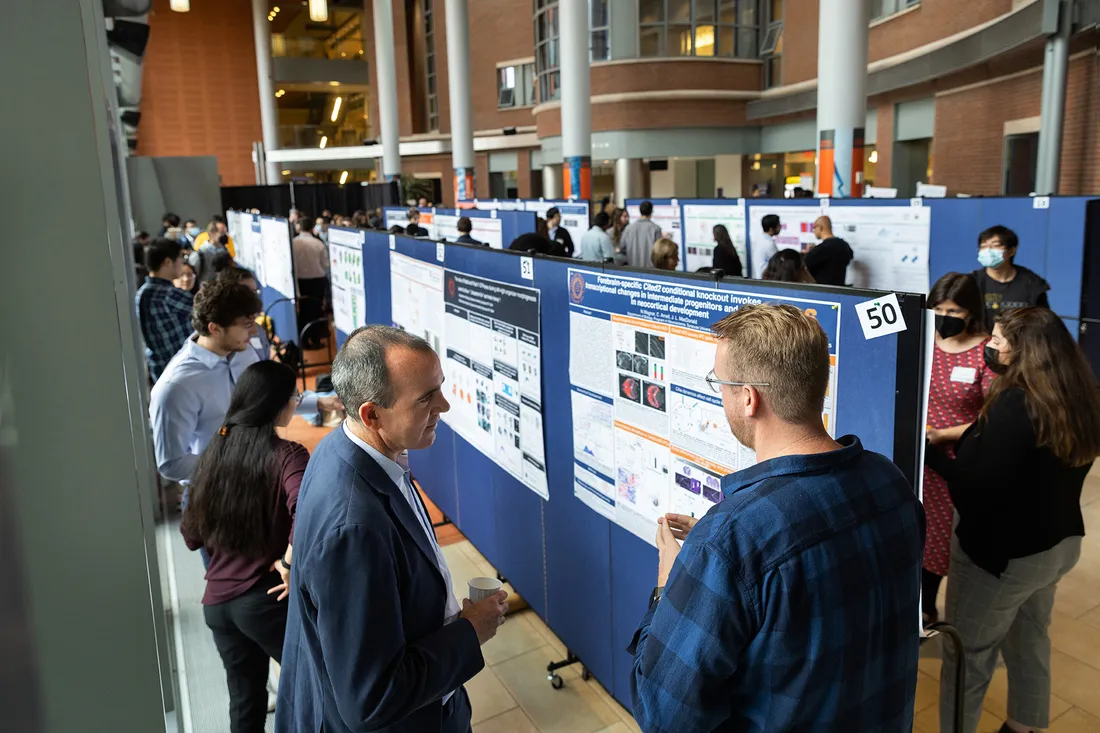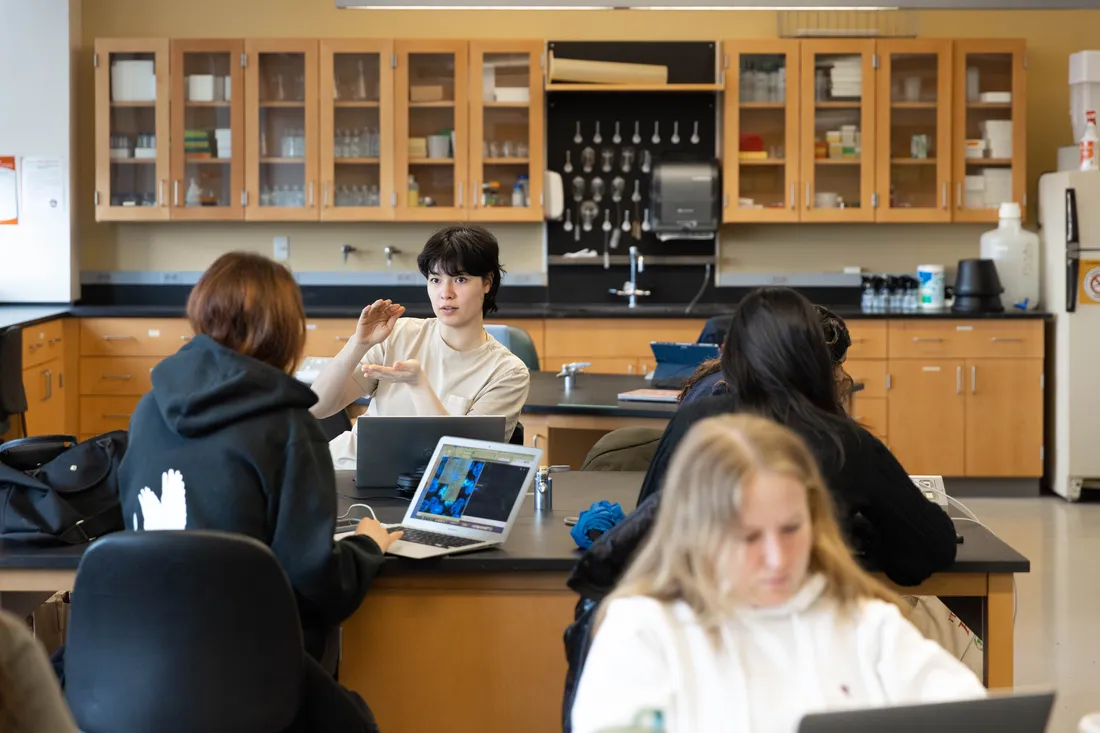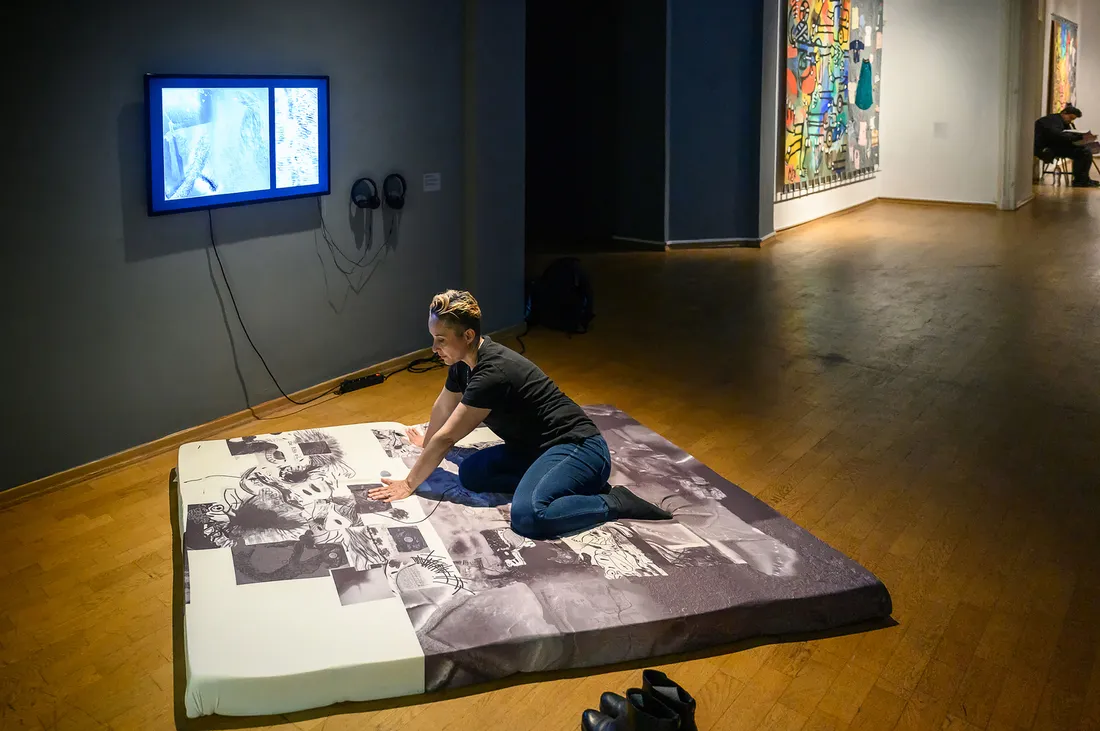
Professor Boryana Rossa examines We Are All Here to Rot, by Oksana Kazmina ’24, at Bulgaria's National Gallery/The Palace. The BioArt work featured print, memory foam and a video loop of Kazmina's own bacteria.
Oksana Kazmina ’24 entered Syracuse University in the fall of 2022, months before Russian tanks rolled into her native Ukraine. A documentary filmmaker, media artist and performer, she responded with a large visceral mural titled Dead(ly) Landscapes or I Myself Should Become All Places I Loved. The piece featured magnified images of her own bacteria, bearing an eerie resemblance to the war-ravaged landscapes of her homeland.
Grown and studied in collaboration with the laboratory of biotechnologist Heidi Hehnly, the bacteria were documented through microscopy in the Blatt BioImaging Center. Kazmina considers them a metaphor for the “disruption and fragmentation of body and space.”
“When people, places and objects are destroyed, emptiness is created,” she says.
Dead(ly) Landscapes typifies a new practice called BioArt, combining elements of visual art, science and technology. A senior majoring in art video in the College of Visual and Performing Arts, Kazmina uses BioArt to explore themes of place, memory and identity.
When people, places and objects are destroyed, emptiness is created.
Oksana Kazmina ’24
She compares her work to a bio-diary. “Recognizing and remembering certain places—and seeing yourself in them—can be cathartic,” says Kazmina, who hails from the now Russian-controlled seaport of Mariupol. For her, the mural has been a lesson in impermanence, that even war and destruction have an expiration date. “This kind of work can be very healing.”
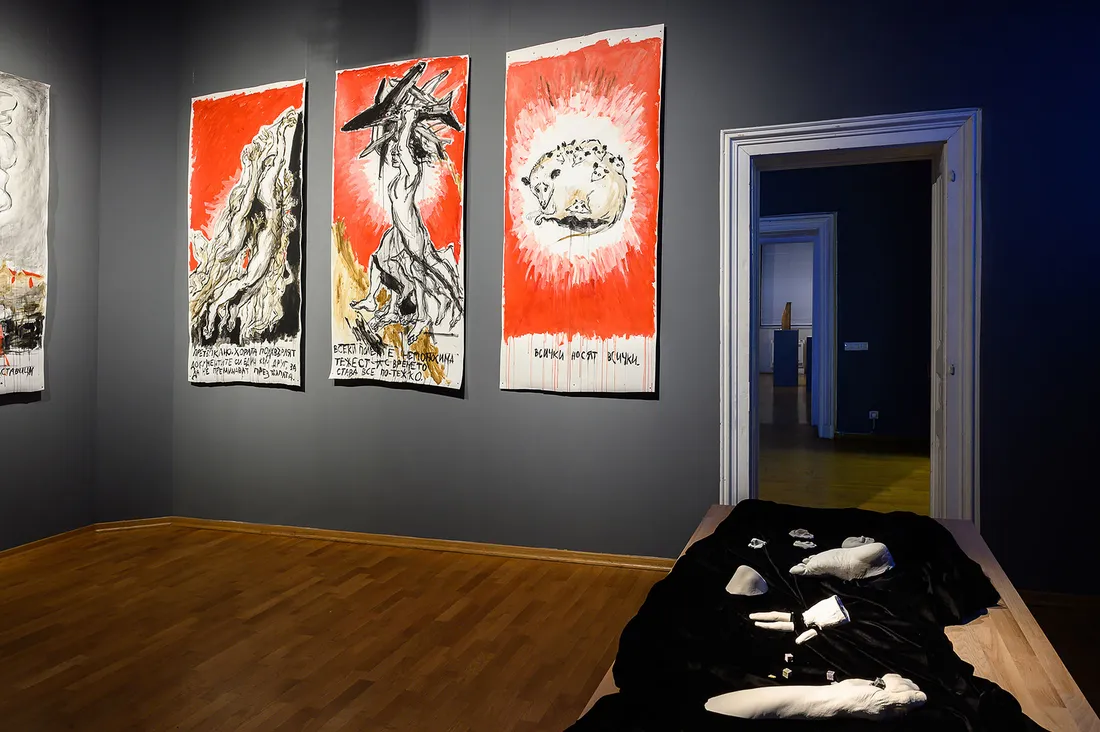
Allies/Foes, a series of multimedia drawings by Rossa, on display in Sofia, Bulgaria.
Sharing Information with Ease
Earlier this summer, Kazmina exhibited in a major show in Sofia, Bulgaria, with classmate Zelikha Zohra Shoja G’24 and their professor Boryana Rossa. The exhibition, Needles in a Haystack, looked at how women respond to emergencies, crises and disasters. The Syracuse trio was selected from among hundreds of female artists worldwide, due in part to their focus on migration and forced displacement.
Kazmina’s submission, We Are All Here to Rot, featured a video loop of her bacteria, bounded by print and memory foam. She began the piece in 2022 in the University’s first-ever BioArt course (BIO 400/600 and TRM 500), co-taught by Rossa and Hehnly, and finished it during a spring residency in the latter’s lab.
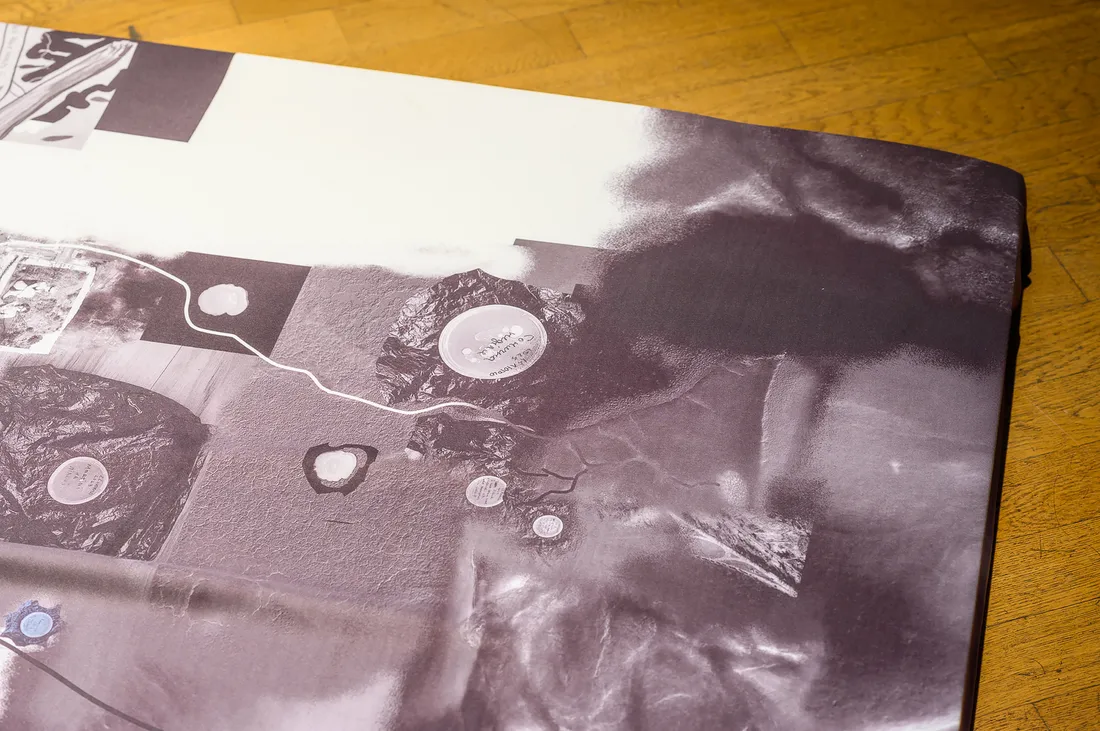
Another look at Kazmina's We Are All Here to Rot, which was selected from among hundreds of pieces for the Bulgarian show Needles in a Haystack.
“Heidi and I supervised the project while graduate students helped with the scientific protocols,” says Rossa, a Bulgarian-born artist and curator. “It reflected Oksana’s feelings of displacement—places she had been connected to but had lost during the war.”
Shoja and Rossa traversed similar terrain at the show at Bulgaria’s National Gallery/The Palace. Shoja produced a pandemic-era documentary called Bibi Amir about the loss of her grandmother. Borne of intergenerational communication differences and the lack of a traditional archive, the eponymous film followed members of Bibi Amir’s maternal family as they made plaster molds of one another’s body parts. The result was an “embodied, living archive” of the deceased.
“Oral storytelling is how we pass down information in my homeland, so when we’re displaced, we lose access to our own history,” says Shoja, a U.S.-based Afghan artist. “This kind of somatic exchange, which includes improvised body movements, lets us share information with ease. It also helps us recover memories and release lingering traumas.”
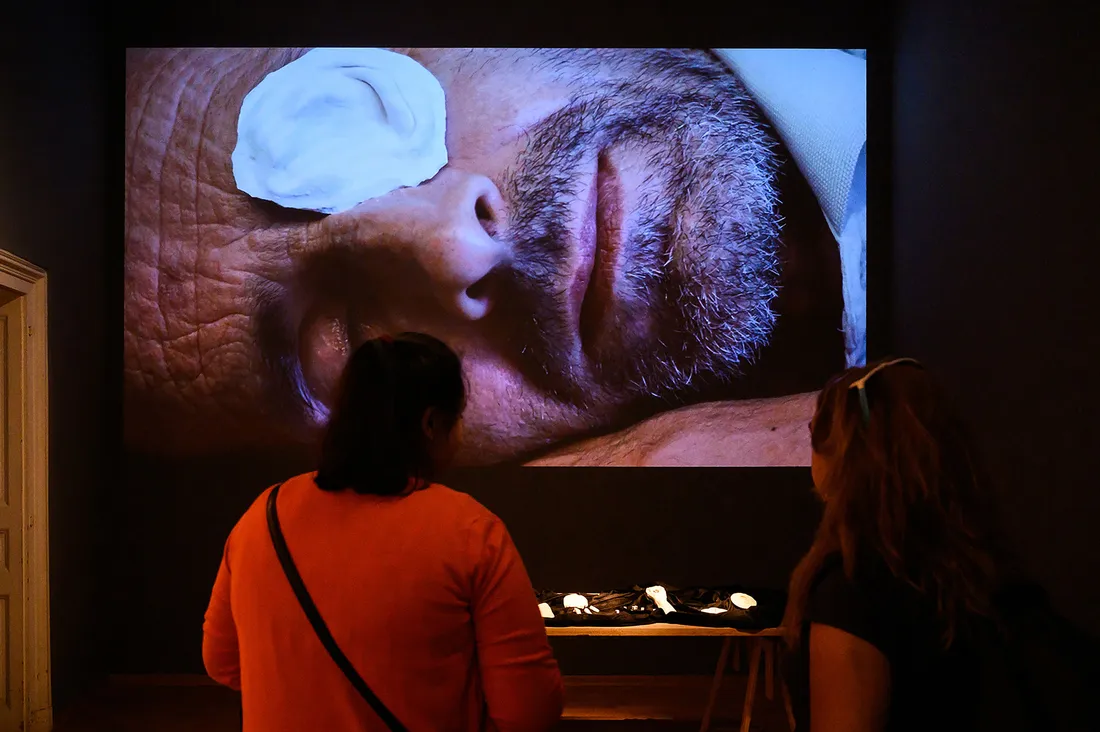
A clip from the pandemic-era documentary Bibi Amir, by Zelikha Zohra Shoja G’24, a U.S.-based Afghan artist.
Rossa, in turn, addressed migration through a quartet of multimodal drawings titled Allies/Foes. The work, which utilized paper, acrylic and video, reflected her personal experiences as an ex-patriot interwoven with those of her husband. “It captured the feeling of being somewhere and nowhere at the same time,” she muses. “Migrating to a country where your existence is determined by a foreign policy with the country from which you’re fleeing—and likely can’t return to—is incredibly painful.”
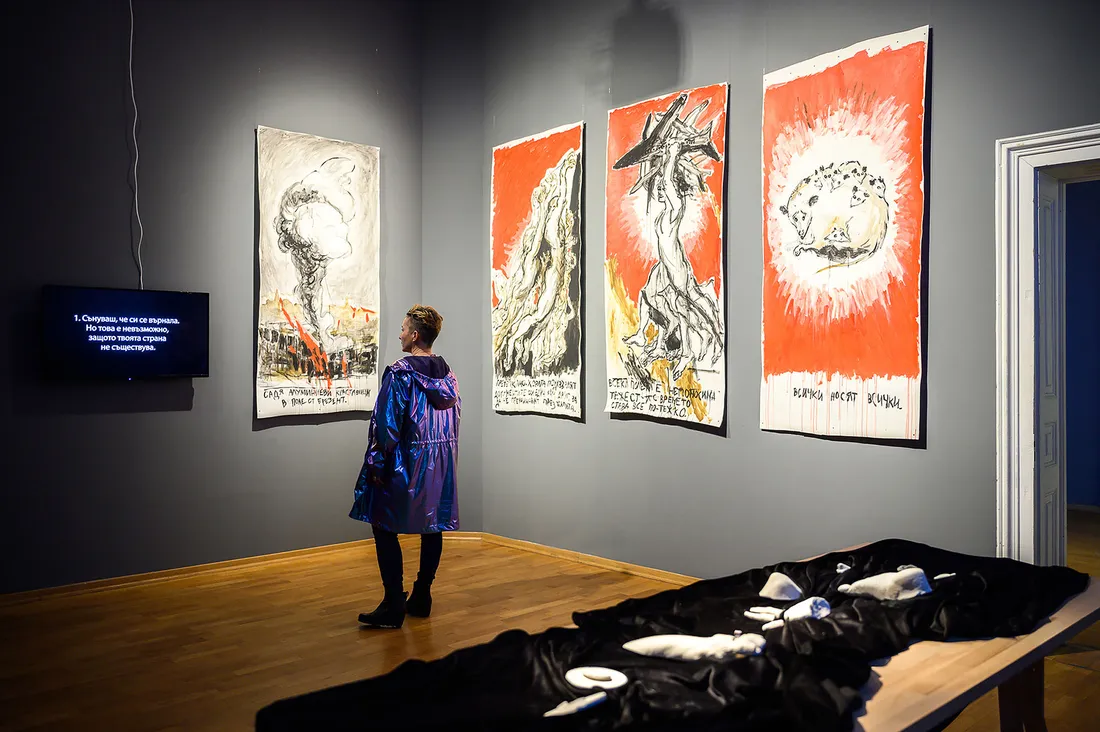
Rossa returned to her native Bulgaria to install her and her students’ artwork for Needles in a Haystack. All three artists focused on themes of migration and forced displacement.
Using Science to Understand Art
Exhibitions like Needles in a Haystack prove that art is not confined to a particular medium or style. Nor is it static.
BioArt embodies this dynamic ethos, having grown out of multinational collaborations in the 1990s. Initially known for its shock value, BioArt has since mainstreamed through its embrace of artistic, cultural and scientific principles. In fact, some scientists are turning to BioArt to spur biomedical applications.
Hehnly uses it to probe the molecular origins of disease. “Artists have always been interested in the relationship between living and nonliving organisms,” says the inaugural Renée Crown Professor in the Sciences and Mathematics and the newly appointed associate director of the BioInspired Institute. “With BioArt, we adapt scientific methods and biotechnologies to explore living systems as artistic subjects.”
She and Rossa are the brains behind the University’s Bio-Art Mixer, a popular series of lectures, workshops and exhibitions. Much of their work is documented by microscopes in the Blatt BioImaging Center, where genes, cells and tissues constitute a new kind of canvas.
The duo is particularly excited about a BioArt session at the annual BioInspired Institute Symposium on Oct. 19-20 and an upcoming exhibition by Bulgarian artist Aksiniya Peycheva, devoted to the visualization of pain (aka trauma mapping). “Aksiniya uses science and bioengineering to help answer important questions about art,” says Rossa, who is unveiling the University’s first living art project in recent memory—the bacterially inspired Glow Me, Glow Me Not—this winter.
She and Hehnly also will co-teach another BioArt course this spring for students of biology, art, and film and media arts. “It will be very hands on, with lots of digital imaging, microscopy and biological drawing,” Hehnly adds. “BioArt doesn’t just celebrate science—it also can manipulate and modify biological processes for the greater good.”
All photos by Rosina Pencheva for the Bulgarian Fund for Women.

